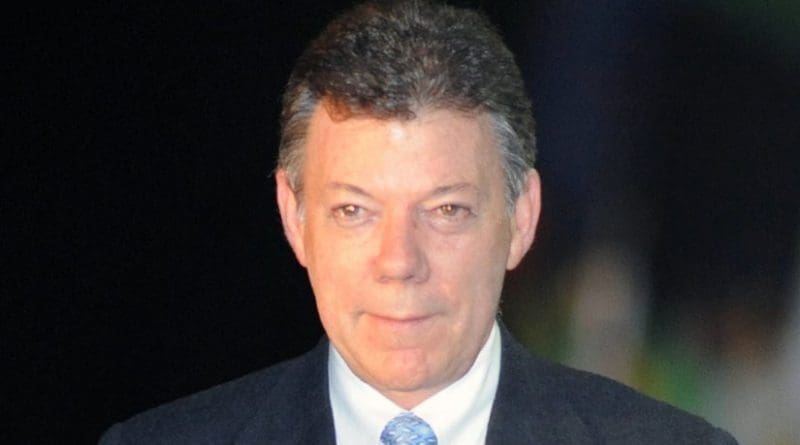Plan Colombia Turns 15 Years
A meeting between Colombian President Juan Manuel Santos and US President Barack Obama on Feb. 4 commemorated 15 years of Plan Colombia, the initiative to combat drugs and guerrillas that was conceived during the administrations of presidents Andrés Pastrana (1998-2002) and Bill Clinton (1993-2001).
Although the main objective of both countries was to prevent the flow of illegal drugs into the United States and promote peace, economic development, improve security and end drug trafficking in Colombia, Plan Colombia, whose initial six-year term was expanded during the administration of former US president George W. Bush (2001-2008), evolved into a war against the guerrillas who allegedly used drug trafficking to finance their activities.
For Santos, Plan Colombia “has been a very useful, very effective assistance instrument by the United States to help Colombia´s fight against drug trafficking, strengthening of institutions, and its armed forces. The results are visible.”
Several analysts agree that the military offensive that US economic assistance allowed, estimated at US$10 billion, helped weaken the Revolutionary Armed Forces of Colombia (FARC), the largest guerrilla group in the country. The leadership of the FARC suffered heavy blows starting in 2008 after the death of Raúl Reyes, one of its main leaders, when the Colombian Army bombarded a guerrilla camp in Ecuadorian territory and the natural death of Manuel Marulanda, top leader and founder of the FARC. Two years later, Víctor Julio Suárez, known as Mono Jojoy, top military chief of the FARC, was shoot down, and in 2011 Alfonso Cano, Marulanda´s successor, died in an armed action.
The top leadership of the guerrilla group was taken over by Rodrigo Londoño Echeverri, alias Timoleón Jiménez or Timochenko, who currently heads the FARC negotiating team in the peace process with the Colombian government that began in 2012 in Havana, Cuba.
Human rights
The search for a negotiated political solution to the armed conflict was one of the three main objectives of Plan Colombia. Other objectives include the fight against drugs and social investment in rural communities affected by the conflict.
Faced with the imminent signing of the peace agreement, scheduled for Mar. 23, President Santos said: “I hope that the United States, who was a great partner in bringing the conflict to an end, can be a great partner in building peace.”
While US economic aid for Plan Colombia was crucial, Colombia spent $120 billion “in military assistance to troops, aid for justice, [and] rural development,” Santos said.
However, Plan Colombia also had questionable impact on human rights, particularly regarding forced displacement and extrajudicial executions. According to the 2015 Global Overview of the Internal Displacement Monitoring Center, organization based in Switzerland, between 1985 and 2014 “Colombia had 6,044,200 internal displacements, 12 percent of its total population. More than 63 percent of displaced people in Colombia live below the poverty line and 33 percent live in extreme poverty.”
According to Human Rights Watch (HRW), “between 2002 and 2008, army brigades across Colombia routinely executed civilians.” In those years, more than 3,700 civilians were killed by soldiers and presented as guerrillas killed in combat.
“These ‘false positive’ killings constitute one of the worst episodes of mass atrocity in the Western Hemisphere in recent decades,” said HRW.
Plan Colombia did not result in improvements for the rural population, African descent and the indigenous peoples who had no improvement in their quality of life but in fact were victims of violence, displacement and occupation of their territories.
In an open letter to President Obama, the Communities Building Peace in the Territories (CONPAZ), which brings together 135 social organizations in Colombia, noted that “full participation and integration of victims, communities and civil society is necessary to ensure we build peace on the ground.”
The letter called on the support of the US President to ensure “truth, justice, reparations, non-recurrence and reconciliation in our communities.”

